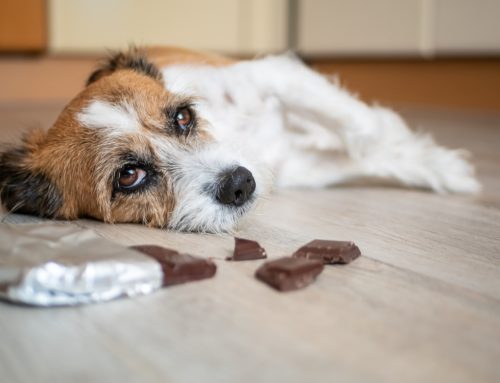Close to 60% of dogs and cats in the U.S. are overweight, according to a 2018 survey by the Association for Pet Obesity Prevention. Is your pet one of them? Surprisingly, many pet owners are shocked to learn that their pets need to lose weight. Since obesity is associated with other health concerns, keeping your pet fit and trim is crucial for their overall health. So, how do you know if your pet needs weight management guidance? Here are some top clues:
#1: Your pet free-feeds
Allowing your pet to munch on food all day—by way of an automatic feeder or a continually refilled bowl—can add unnecessary calories and, in turn, unwanted pounds. Free-feeding is convenient for pets and owners, but is not a sustainable method for most pets. If you can’t be home for your pet’s normal feeding times, or your pet prefers to snack throughout the day, consider a timed automatic feeder that provides a set food amount for your pet without allowing them to gorge.
#2: You don’t portion out your pet’s food
Filling the food bowl to the brim may make your pet beam from ear to ear, but probably is not doing their waistline any favors. Consult with your Driftwood Animal Hospital veterinarian or your pet’s food packaging for guidance on appropriate portion sizes for your individual pet. Remember that a heaping cup of food compared with a leveled cup could mean a 100-calorie difference—a hefty amount for a dog or cat.
#3: You don’t exercise with your pet daily
If your pet isn’t moderately active every day, they could have a weight problem. We all know that daily exercise is recommended for our overall health, and the same goes for our furry friends. Whether unstructured play, a formal jog, or a casual leash walk, getting your pet’s heart rate up for 30 minutes a day will not only do wonders for their weight, but will also keep them mentally and physically healthy. Talk to our veterinary team if your pet is overweight, obese, or has any underlying medical conditions before beginning a formal exercise regimen.
#4: You have no idea how much your pet weighs
While a pet’s body condition entails more than the number on the scale, monitoring your pet’s progress, or relapse, quantitatively helps you keep them on track to a healthy weight. Start by weighing your pet today and every month or so—more frequently if your pet needs to lose weight—ensuring you keep a written record for monitoring purposes.
#5: Treats are a mainstay in your home

Giving treats to your pet is one of life’s great joys. But, seeing your pet’s excitement and eagerness when they hear the treat bag rustle likely makes you give them more than you should. While treats are perfectly fine on occasion, they should be an exception. If you simply can’t give up your pet’s daily treat habit, at least consider switching to a smaller, healthier option to limit your pet’s additional calories. Opt for training treats that are smaller than traditional biscuits, or fresh fruits or veggies. And, remember to include each treat in your pet’s daily calorie count.
#6: You can’t feel your pet’s ribs
One of the easiest ways to assess your pet’s body condition is by feeling the sides of their chest for their ribs. A healthy weight pet will have a slight fat pad over the rib cage, with the ribs still easily palpable. If you can visually see your pet’s ribs, they may be underweight. If you cannot feel your pet’s ribs at all, they may be obese. Other areas to assess include the tail base for excess fat, and the belly, which should show an abdominal “tuck” at the waistline when viewing your pet from the side. Body scoring guides like this one are helpful in this assessment.
#7: Your pet can no longer exercise as long or as well
If your pet is slowing down during exercise or play, they could be overweight. You may notice more labored breathing or their inability to finish a walk or run. Of course, a number of medical reasons can explain exercise intolerance in pets, so a veterinary examination is warranted if your pet has become less active.
At Driftwood Animal Hospital, we are dedicated to helping you achieve your pet’s weight goals. If you are concerned about your pet’s body condition or need help monitoring their food intake, contact us for a consultation.








Leave A Comment